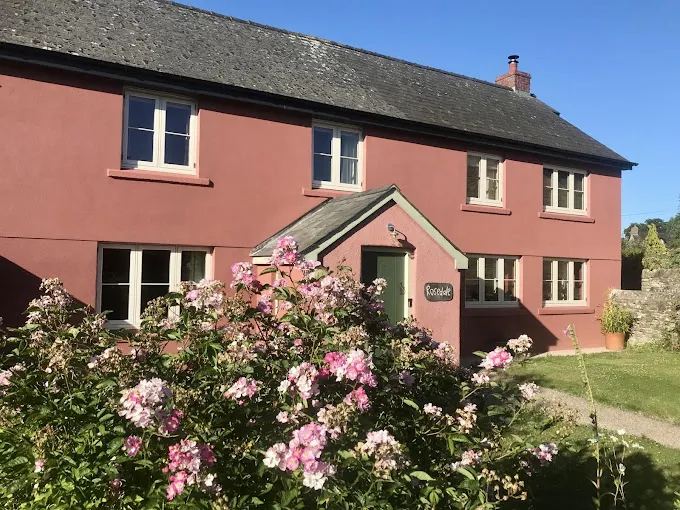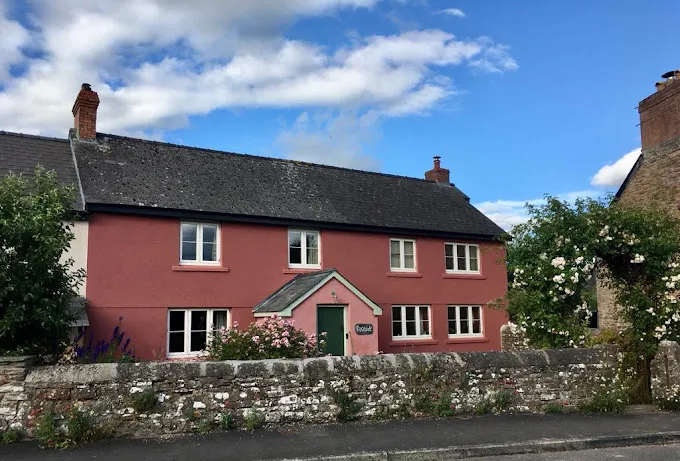Expert Internal Render Repair Services in South Wales
When internal render repair becomes necessary, property owners throughout South Wales face a critical decision that can significantly impact their home’s comfort, appearance, and value. Whether dealing with cracks, bulging sections, or complete render failure, addressing these issues promptly prevents more extensive damage and costly repairs down the line. At Coloured Rendering South Wales, we understand that internal render problems can be both frustrating and disruptive to daily life, which is why we offer comprehensive repair solutions designed to restore your walls to their original condition with minimal inconvenience.
Our team has witnessed countless examples of internal render issues across South Wales properties, from Victorian terraces in Swansea to modern developments in Cardiff. Each situation requires careful assessment and appropriate repair techniques to ensure long-lasting results. The key to successful internal render repair lies in understanding the underlying causes of failure and addressing them comprehensively rather than simply covering surface symptoms.
Understanding Internal Render Problems
Internal render failure manifests in various ways, each indicating different underlying issues that require specific repair approaches. Common problems include hairline cracks that appear around windows and doors, often caused by building movement or temperature fluctuations. More serious issues involve hollow-sounding areas where render has lost adhesion to the substrate, creating potential safety hazards and allowing moisture penetration behind the wall surface.
Bulging or blown render represents another significant concern, typically resulting from moisture infiltration that causes the render to expand and separate from the wall. This problem frequently occurs in properties with inadequate damp proofing or where external water ingress has gone unaddressed. The Welsh climate, with its frequent rainfall and high humidity levels, can exacerbate these issues, particularly in older properties with solid walls.
Call Us
Staining and discoloration often accompany render problems, indicating moisture presence that can lead to mold growth and health concerns. These visual symptoms serve as early warning signs that prompt action can prevent more extensive damage. Understanding these various manifestations helps property owners recognize when professional internal render repair becomes necessary.
Environmental Factors Affecting Internal Render
The South Wales environment presents unique challenges for internal render systems. Coastal properties face salt-laden air that can penetrate building fabric, while inland areas experience temperature variations that cause expansion and contraction cycles. These environmental factors contribute to render stress and eventual failure if not properly managed through appropriate repair and maintenance strategies.
Properties in areas like Swansea and Cardiff often experience additional challenges from urban pollution and traffic vibrations that can accelerate render deterioration. Modern heating systems can also create internal temperature differentials that stress render systems, particularly in properties where insulation levels vary throughout the building.
Professional Assessment and Diagnosis
Effective internal render repair begins with thorough assessment to identify not only visible problems but also underlying causes that could lead to future failures. Our experienced team conducts comprehensive surveys that examine substrate conditions, moisture levels, and structural factors that may contribute to render problems. This diagnostic approach ensures that repairs address root causes rather than merely treating symptoms.
Assessment involves both visual inspection and physical testing to determine render adhesion, thickness, and composition. Different render types require different repair approaches, and understanding the existing system is crucial for compatibility and long-term success. We examine areas around windows, doors, and service penetrations where problems commonly originate, as well as checking for signs of movement or settlement that might indicate structural issues.
Moisture testing forms a critical component of our assessment process, using specialized equipment to measure moisture levels within walls and identify sources of water ingress. This information guides our repair strategy and helps prevent future problems by addressing moisture sources before completing render repairs.
Substrate Evaluation
The condition of the substrate beneath failing render significantly impacts repair success. We assess whether existing surfaces provide adequate mechanical key for new render adhesion, checking for loose material, dust, or contamination that could compromise bond strength. Different substrate types, from traditional lime mortar to modern cement blocks, require specific preparation techniques for optimal repair results.
Our evaluation also considers the compatibility between existing and new materials, ensuring that repairs integrate seamlessly with surrounding areas. This attention to compatibility prevents future failures at repair boundaries and maintains the integrity of the overall render system.
Repair Techniques and Methods
Modern internal render repair employs various techniques depending on the extent and nature of damage. Minor crack repair involves careful preparation, appropriate filler materials, and skilled application to create invisible repairs that blend seamlessly with surrounding surfaces. These repairs require understanding of render composition and expansion characteristics to prevent recurrence.
For hollow or blown areas, complete removal and replacement becomes necessary to restore structural integrity. This process involves carefully cutting back to sound render, preparing the substrate, and applying new render in thin layers to build up the required thickness. Each layer must cure properly before the next application, ensuring strong adhesion and preventing future problems.
Extensive damage may require complete re-rendering of affected areas or entire rooms. Our approach involves protecting surrounding surfaces, removing damaged material, and applying new render systems using proven techniques and high-quality materials. We coordinate this work to minimize disruption to property occupants while ensuring thorough, professional results.
Material Selection and Compatibility
Successful internal render repair depends heavily on selecting appropriate materials that match existing render characteristics while providing improved performance. We use high-quality gypsum-based plasters and specialized repair compounds designed for internal applications. These materials offer excellent adhesion, workability, and finish quality while maintaining compatibility with existing systems.
Our material selection considers factors such as substrate type, room usage, and environmental conditions. Bathrooms and kitchens may require moisture-resistant formulations, while reception areas benefit from smooth-finish materials that accept decoration beautifully. We source materials from reputable manufacturers and ensure proper storage and handling to maintain their performance characteristics.
| Repair Type | Typical Duration | Suitable For | Key Benefits |
|---|---|---|---|
| Crack Repair | Same day | Minor settlement cracks | Quick, cost-effective solution |
| Patch Repair | 1-2 days | Localized damage areas | Minimal disruption, targeted fix |
| Area Re-rendering | 3-5 days | Extensive wall damage | Comprehensive restoration |
| Full Room | 5-10 days | Complete render failure | Fresh start, improved performance |
Coloured Rendering South Wales Internal Render Repair Services
At Coloured Rendering South Wales, we bring over twenty-five years of experience to every internal render repair project. Our established reputation, evidenced by our perfect five-star Google rating, reflects our commitment to delivering exceptional results that exceed client expectations. We understand that internal render repair disrupts daily routines, which is why we work efficiently to minimize inconvenience while maintaining our high standards.
Our comprehensive approach to internal render repair begins with detailed consultation to understand your specific requirements and concerns. We provide honest assessments of existing conditions and recommend repair strategies that offer the best long-term value. Our team uses traditional plastering skills combined with modern materials and techniques to deliver repairs that blend seamlessly with existing surfaces.
We take pride in our ability to match existing render textures and finishes, ensuring that repairs remain virtually invisible once decorated. This attention to detail distinguishes our work and contributes to the lasting satisfaction of our clients throughout South Wales. Our internal render repair services include everything from minor crack repairs to complete room re-plastering, all completed to the same exacting standards.
The combination of local knowledge and technical expertise enables us to address the specific challenges faced by South Wales properties. We understand how the regional climate affects internal render systems and specify appropriate materials and techniques for lasting results. Our commitment to quality extends beyond project completion, with ongoing support and advice to help maintain your newly repaired surfaces.
Prevention and Maintenance Strategies
Preventing internal render problems proves more cost-effective than addressing failures after they occur. Regular inspection of internal surfaces helps identify early signs of problems before they develop into major issues. We recommend checking for hairline cracks, particularly around doors and windows, and monitoring areas where moisture might accumulate.
Maintaining appropriate ventilation helps prevent moisture buildup that can compromise render integrity. This becomes particularly important in properties with modern heating systems that can create internal humidity levels harmful to traditional render materials. Simple measures like using extraction fans in bathrooms and kitchens can significantly extend render life.
Temperature control also plays a role in render preservation. Avoiding extreme temperature variations and maintaining consistent heating patterns reduces stress on render systems. Properties left unheated for extended periods may experience render problems when heating resumes, particularly in older buildings with solid walls.
Early Intervention Benefits
Addressing minor render issues promptly prevents them from developing into major problems requiring extensive repairs. Small cracks can be sealed before they allow moisture penetration, while minor adhesion issues can be resolved before render sections become completely detached. This proactive approach saves both time and money while maintaining property appearance and value.
Regular maintenance also provides opportunities to assess overall render condition and plan for future work. Understanding the aging characteristics of your render system helps budget for eventual renewal while maximizing the life of existing surfaces through appropriate care and minor repairs.
Future Trends in Internal Render Systems
The internal render repair industry continues evolving with new materials and techniques that offer improved performance and application efficiency. Modern repair compounds provide better adhesion and flexibility, reducing the likelihood of future problems. These advances particularly benefit properties in challenging environments where traditional materials may struggle.
Moisture management technology has advanced significantly, with new products offering better breathability and water resistance. These developments help address one of the primary causes of internal render failure while maintaining the aesthetic and functional benefits of traditional plastering systems. Smart repair materials that respond to environmental conditions represent an exciting frontier in render technology.
Application techniques continue improving, with new tools and methods enabling more precise repairs with reduced waste and improved consistency. These advances help professional contractors deliver better results while reducing project timelines and costs. The integration of digital assessment tools also enhances diagnostic accuracy, leading to more targeted and effective repairs.
Sustainability considerations increasingly influence material selection and repair strategies. Environmentally friendly repair compounds and techniques that minimize waste appeal to environmentally conscious property owners while often providing superior performance characteristics. These trends suggest a bright future for internal render repair services that combine traditional skills with modern innovations.
Conclusion
Internal render repair represents a crucial aspect of property maintenance that affects both appearance and structural integrity. Understanding the various types of render problems and their underlying causes enables property owners to make informed decisions about repair strategies and timing. Professional assessment and appropriate repair techniques ensure that problems are addressed comprehensively rather than merely covered up.
The expertise and experience of qualified professionals like those at Coloured Rendering South Wales make the difference between temporary fixes and lasting solutions. Our comprehensive approach to internal render repair addresses both immediate problems and underlying causes, providing peace of mind and long-term value for property owners throughout South Wales.
As you consider your internal render repair needs, remember that prompt action prevents minor issues from becoming major problems. How might addressing your render concerns today improve your property’s comfort and value? What role does professional expertise play in ensuring repair success? How can preventive maintenance strategies help protect your investment in internal render repair? Contact us at 07815 868070 or visit our contact page to discuss your specific requirements and learn how our experience can benefit your property.


